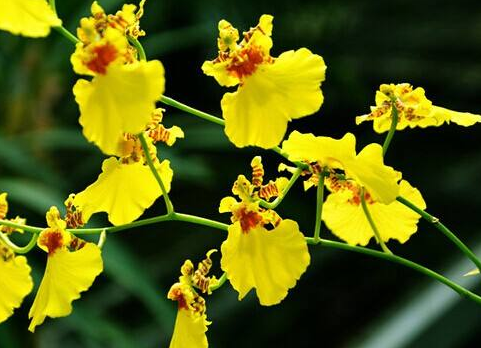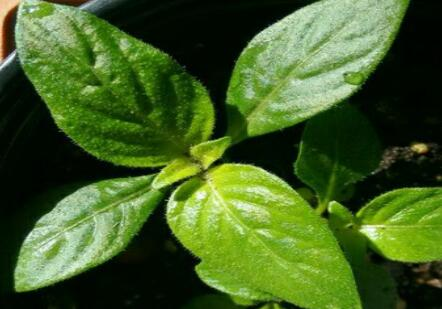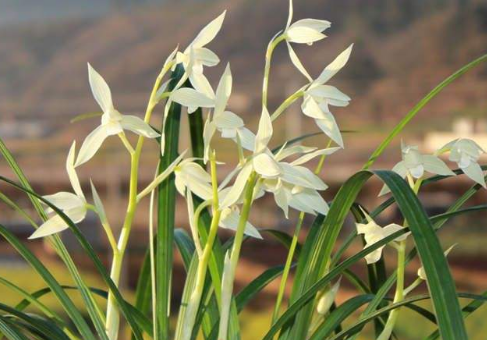Disease control of Oncidium
1. Mosaic disease
Symptoms: yellowish spots appear on the leaves at the initial stage. Then the disease spot will lead to leaf necrosis, the leaf on the formation of sunken brown necrotic spots, gradually withered.
Solution: clean up the diseased leaves in time, avoid the growth environment of high temperature and humidity, properly increase the application of phosphorus and potassium fertilizer, Bordeaux solution and methyl thiophanate solution can be sprayed.

two。 Grey mold disease
Symptoms: Botrytis cinerea occurs on leaves and petals, causing petals to produce small spots, and then gradually expand into round brown spots. In severe cases, the disease spot will spread to the entire petals, withering the flowers, and gray moldy layers will appear on the leaves and petals.
Solution: maintain good ventilation conditions, avoid the production of bacteria, spray fungicides in time.
Control methods of Diseases and insect pests of Oncidium
The insect pests of Oncidium are mainly scale insects. The shellfish parasites on the leaf edge or leaf surface of the plant to absorb sap, which causes the plant to wither, and in severe cases, the whole plant will wither and die. You can spray 40% omethoate 1000 times or 50% marathon EC 2000 times. The main diseases of Oncidium are soft rot and leaf spot. When leaf spot occurs, it harms the leaves of Oncidium, and when soft rot occurs, it will kill the whole plant. It can be controlled by 1000 times of carbendazim and 50% methyl thiophanate soluble wet agent.
Common insect pests and control methods of Oncidium
Oncidium has a lot of insect pests, but the most serious damage is scale insects. There are many species of scale insects, and the damage degree is different in different environments. Xiaobian will show you about it!
Oncidium pest: coffee gray scale
This small scale insect, which is gray or brown in color, is mainly parasitic on the leaves, mostly on the back of the leaves, sucking on the sap of the plant. When the damage of coffee scale is serious, the whole leaf is dense, which not only consumes the nutrients of the plant, but also causes coal fouling disease because of excrement, which affects the ornamental value.
Prevention and control methods: strengthen maintenance, timely ventilation, and rinse with clean water when insect bodies are found. When the disease occurs in a large area, it can be sprayed once every 10 days and once every 3 times. The drugs you can choose from are omethoate and dichlorvos.
Oncidium pest: White shield scale
This is the most common pest of Oncidium. The worms are white, with white bulges around them. The insect body is small, 1.5-2mm, and the harm is more serious. It mainly occurs in the short variety of Oncidium, when it is serious, the leaves will be covered with white, affecting the accumulation of photosynthetic nutrients.
Control method: when a small amount of white shield scale is found, scrape it off with bamboo in time, or wash it with detergent solution. If there are more white bugs, spray chemicals in time.
Oncidium pest: tumor oyster scale
The oyster scale is about 2 mm long and is yellowish brown. It is fixed on both sides of the leaf to absorb juice, which makes the leaf lose its luster and affects its growth and ornamental value. The oyster scale appears 2 or 3 times a year, and it is more serious in the second half of the year.
Control methods: keep ventilation, control watering, keep leaves dry at night; spray chemicals in time, please refer to coffee gray scale for details.
- Prev

The culture steps of star flowers are as follows:
First, the seeds for sowing starry flowers are relatively small, so the seeds should be sown on the burrow plate. The hole should not be too big and too small, preferably 1.5-2 cm. Do not cover the seeds with objects during germination so as not to block the light. During this period, adequate watering is needed to promote the rapid germination of seeds.
- Next

What should we do if the leaves turn yellow?
1. The reason for the light: too much sunlight will burn the leaves of heavy snow, especially in summer, which is very easy to get sunburn, resulting in yellowing of leaves. Treatment method: control watering in the process of snow maintenance, pay attention to ventilation, avoid strong light, keep it in a cool place in summer and shade properly.
Related
- Fuxing push coffee new agricultural production and marketing class: lack of small-scale processing plants
- Jujube rice field leisure farm deep ploughing Yilan for five years to create a space for organic food and play
- Nongyu Farm-A trial of organic papaya for brave women with advanced technology
- Four points for attention in the prevention and control of diseases and insect pests of edible fungi
- How to add nutrient solution to Edible Fungi
- Is there any good way to control edible fungus mites?
- Open Inoculation Technology of Edible Fungi
- Is there any clever way to use fertilizer for edible fungus in winter?
- What agents are used to kill the pathogens of edible fungi in the mushroom shed?
- Rapid drying of Edible Fungi

